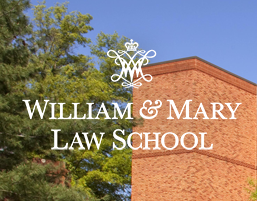William & Mary Environmental Law and Policy Review
Abstract
When the Court granted states “special solicitude in [its] standing analysis” in Massachusetts v. EPA, it left lower courts with more questions than answers. While legal scholars continue to debate these questions thirteen years later, the practical impacts of Massachusetts v. EPA are coming into focus. Today states are suing the federal government, often in multistate coalitions, to enforce or challenge federal administrative policies. This intergovernmental, public-law litigation increased dramatically during the Obama administration and has further skyrocketed since January 2017. States do not exclusively rely upon special state solicitude in suing the federal government. However, this lowered procedural bar is likely a contributing factor to the dramatic rise in state-initiated litigation.
The Trump administration’s regulatory “rollback” efforts are also inspiring public-law litigation. These rollbacks are arguably more pronounced than the characteristic “ebb and flow” of environmental policy since the 1970s. The administration is hollowing out existing environmental and climate policies, increasing atmospheric pollutants like carbon dioxide, methane, sulfur dioxide, nitrogen dioxide, and particulate matter. Instead of merely slowing progress on clean energy development and emissions reductions, the administration’s rollbacks are reversing decades of environmental policy development and are pushing the globe toward climate catastrophe.
The Trump administration’s rollbacks include stays and repeals of dozens of environmental rules. These rules affect national air quality, water quality, endangered species, automobile emissions, and coal-fired power plants. Keeping with its stated goals, the administration is successfully slowing implementation of, reversing, and replacing many Obamaera climate policies like the Clean Power Plan. But these changes have not gone unchallenged.
Over a dozen states, primarily led by California, New York, and Massachusetts, are challenging these deregulatory efforts, creating multistate coalitions with other interested states. State attorneys general are leading this litigation charge. Historically, attorneys general have been empowered to sue on behalf of their citizens as parens patriae or “parent of his or her country.” However, the Court’s decision in Massachusetts v. Mellon limited states in this representative capacity. Following that decision, states remained empowered to sue to protect their own interests, like their property and the enforcement of their own laws. Some argue that attorneys general are uniquely situated as popularly accountable officials to initiate litigation against the federal government. This is because intergovernmental state public-law litigation can serve as a checking function for the federal executive. For example, the Court’s grant of special state solicitude in Massachusetts v. EPA relies on this principle, namely that states can sue the federal government in their capacity as a quasi-sovereign. In that case, the court held that the state had established standing to challenge how EPA was enforcing the Clean Air Act (“CAA”), because EPA’s failure to regulate greenhouse gases threatened that state’s coastal property.
This Note clarifies the scope of the Massachusetts v. EPA Court’s grant of special solicitude to states challenging federal administrative policies. To clarify muddy doctrine, this Note proposes a “limiting principle” to special state standing: courts should ask whether a state asking for special standing solicitude claims an environmental injury. This Note argues that states have benefitted from a lowered standing threshold with little guidelines, and this lack of guidance led to an overbroad application of Massachusetts v. EPA. This Note concludes that special state standing is limited to environmental injuries to states’ quasi-sovereign interests. This limitation is supported by Supreme Court precedent, the unique spillover effects of environmental injuries, and the policy considerations that anthropogenic climate change requires.
Part I of this Note outlines the ebb and flow of environmental policy and argues that the Trump administration has moved from the typical deregulatory strategy of “low profile” policy retrenchment to an aggressive policy reversal approach. Specifically, this section summarizes the history of environmental policy in the United States, and the political “ebb and flow” of environmental policy—and it discusses how the Trump administration is decidedly reversing environmental laws in the name of industry.
Part II outlines state intergovernmental litigation as a response to federal environmental policy making and policy retrenchment. This section examines the development of state-led intergovernmental litigation and the impact of political polarization in both state coalitions and the federal government. Part II further proposes a limiting principle to special state standing. Part III elaborates on this limiting principle that states are entitled to special standing when protecting quasi-sovereign, environmental rights. After defining states’ quasi-sovereign rights, it argues that the Fifth Circuit in Texas v. United States misappropriated the Massachusetts v. EPA holding. It concludes that because that court granted special solicitude to a mere economic, non-environmental injury, it overextended the intended scope of Massachusetts v. EPA special state standing.
Environmentally focused state public-law litigation is different from the other policy-influencing actions brought by state attorneys general. In light of this difference, this Note asks whether non-environmental lawsuits by state attorneys general, like in Texas, should receive special state standing. This Note answers this question in the negative and concludes that special state standing should be limited to intergovernmental litigation where states allege environmental injuries to their quasi-sovereign rights.

